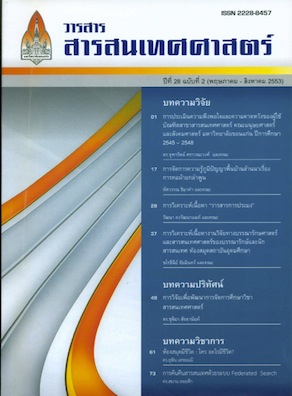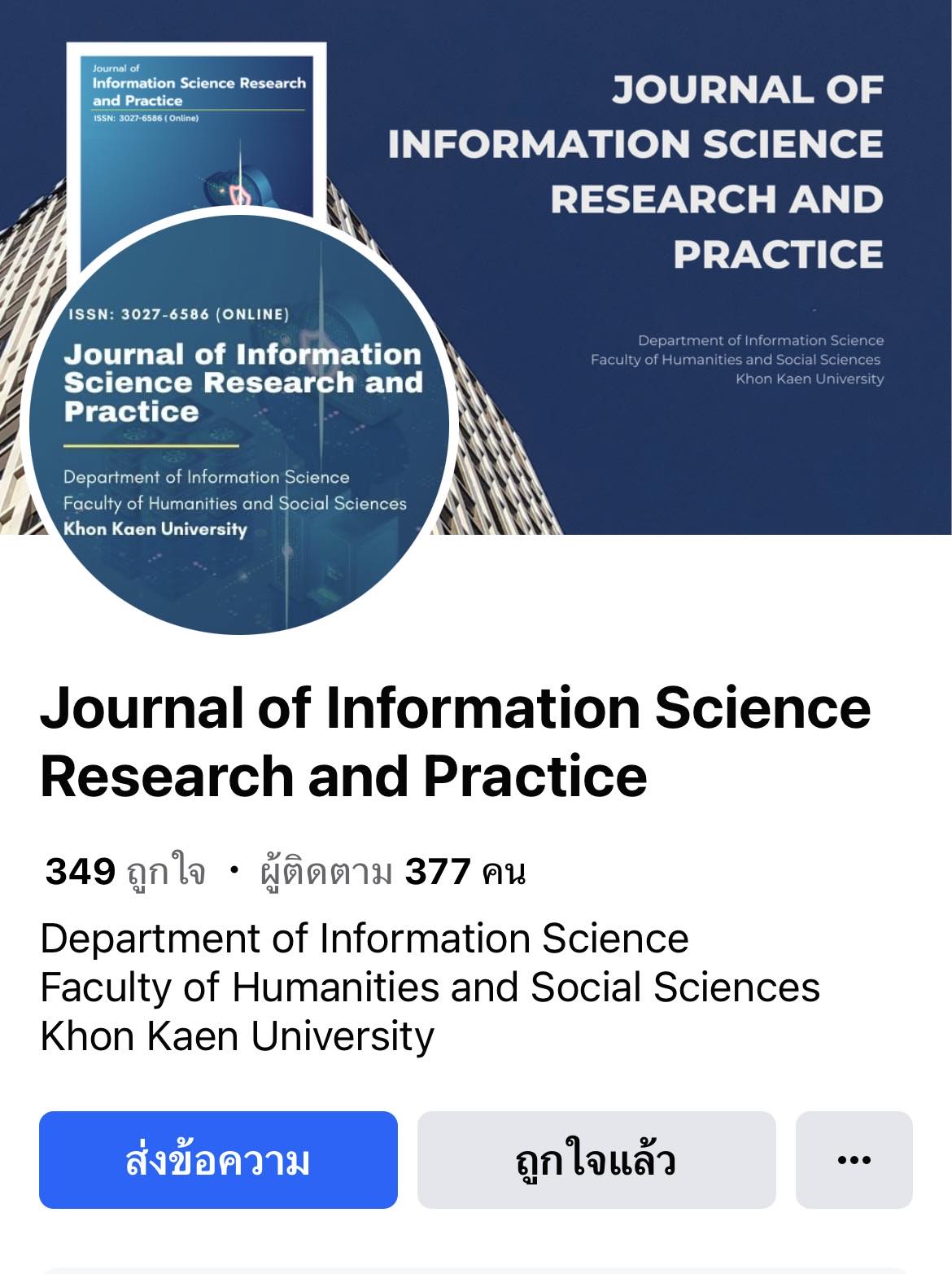ห้องสมุดมีชีวิต : ใคร อะไรมีชีวิต?
Abstract
บทคัดย่อ
บทความนี้นำาเสนอนิยามของ “ห้องสมุดมีชีวิต” ตามความคิดของนักวิชาการซึ่งตีความหลากหลายและยังไม่มีนิยามและรูปแบบของห้องสมุดมีชีวิตของไทยที่เป็นที่ยอมรับในวิชาชีพสารสนเทศและห้องสมุดในประเทศไทย ในขณะที่แนวคิดของตะวันตก “ห้องสมุดมีชีวิต” หมายถึงหนังสือมีชิวิต หนังสือมนุษย์หรือสมุดมนุษย์ที่คนตัวเป็นๆ ถูกนำามาใช้เป็นหนังสือให้ผู้ใช้บริการได้พูดสนทนาซักถามข้อคาใจเพื่อขจัดหรือลดอคติหรือความเกลียดชังที่มีต่อกัน แนวคิดนี้กำาเนิดในประเทศเดนมาร์กและเผยแพร่เข้าไปในทุกทวีปรวมทั้งในประเทศไทย นอกจากนี้สาระสำาคัญที่นำเสนอในบทความ คือ มุมมองและข้อเสนอแนะของผู้เขียนในการพัฒนาให้ห้องสมุดเป็นสถาบันสังคมที่จำาเป็นสำาหรับการดำเนินชีวิตของคนในสังคม
Abstract
Presented in this article are many definitions of “living library”, given by a number of Thai academics.Not a single definition or model of a living library has been accepted as a working definition or model inThailand. In the western concept, a “living library” means a living book, human book, or human library, wherehuman begins are borrowed as books. These living books are used as a tool to get rid of prejudice, hatredand conflicts. The western concept was originated in Denmark and has reached all continents, includingThailand. In addition, the author’s viewpoints and recommendations for developing a “living library” to bea truly necessary social institution is presented.








